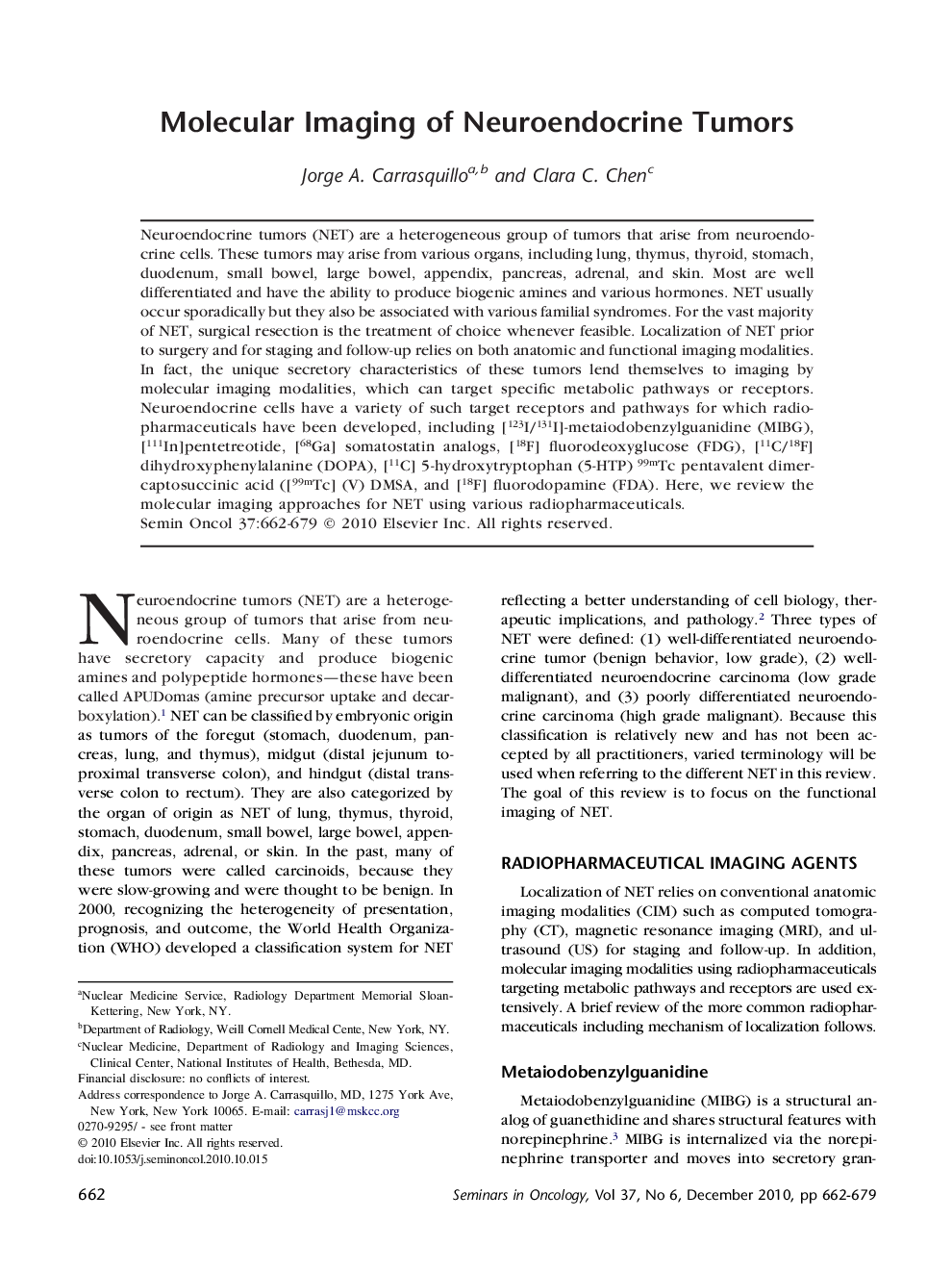| کد مقاله | کد نشریه | سال انتشار | مقاله انگلیسی | نسخه تمام متن |
|---|---|---|---|---|
| 2162243 | 1091241 | 2010 | 18 صفحه PDF | دانلود رایگان |
عنوان انگلیسی مقاله ISI
Molecular Imaging of Neuroendocrine Tumors
دانلود مقاله + سفارش ترجمه
دانلود مقاله ISI انگلیسی
رایگان برای ایرانیان
موضوعات مرتبط
علوم زیستی و بیوفناوری
بیوشیمی، ژنتیک و زیست شناسی مولکولی
تحقیقات سرطان
پیش نمایش صفحه اول مقاله

چکیده انگلیسی
Neuroendocrine tumors (NET) are a heterogeneous group of tumors that arise from neuroendocrine cells. These tumors may arise from various organs, including lung, thymus, thyroid, stomach, duodenum, small bowel, large bowel, appendix, pancreas, adrenal, and skin. Most are well differentiated and have the ability to produce biogenic amines and various hormones. NET usually occur sporadically but they also be associated with various familial syndromes. For the vast majority of NET, surgical resection is the treatment of choice whenever feasible. Localization of NET prior to surgery and for staging and follow-up relies on both anatomic and functional imaging modalities. In fact, the unique secretory characteristics of these tumors lend themselves to imaging by molecular imaging modalities, which can target specific metabolic pathways or receptors. Neuroendocrine cells have a variety of such target receptors and pathways for which radiopharmaceuticals have been developed, including [123I/131I]-metaiodobenzylguanidine (MIBG), [111In]pentetreotide, [68Ga] somatostatin analogs, [18F] fluorodeoxyglucose (FDG), [11C/18F] dihydroxyphenylalanine (DOPA), [11C] 5-hydroxytryptophan (5-HTP) 99mTc pentavalent dimercaptosuccinic acid ([99mTc] (V) DMSA, and [18F] fluorodopamine (FDA). Here, we review the molecular imaging approaches for NET using various radiopharmaceuticals.
ناشر
Database: Elsevier - ScienceDirect (ساینس دایرکت)
Journal: Seminars in Oncology - Volume 37, Issue 6, December 2010, Pages 662-679
Journal: Seminars in Oncology - Volume 37, Issue 6, December 2010, Pages 662-679
نویسندگان
Jorge A. Carrasquillo, Clara C. Chen,